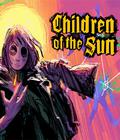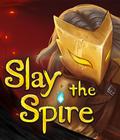Even if you've never played it, you've probably seen games influenced by Slay the Spire. Fights In Tight Places, Monster Train, One Step to Eden, Ring of Pain and countless others owe some of their lineage to the strikingly interesting game. Slay the Spire isn't just noteworthy as a groundbreaking game, though. To this day, and in the wake of plenty of inspirations and imitators, it remains one of the most engaging, exciting and all-around delightful games on the market.
The basic layout of Slay the Spire is probably quite familiar, as it is an oft-copied formula. You begin at the bottom of a map and can select from multiple directions, each one leading you to items, events, fights, or resting spots. You have a rough idea of what you're going to face (random event, elite enemy, shop, and so on), but everything other than that has some degree of randomization. The game is divided into three acts, with a boss at the end of each, and if you complete a special objective, you can face the real, final boss in a short fourth act. Otherwise, your run ends if you die or defeat the third boss.
Combat is effectively a single-player card game. You begin with three energy and a deck of cards, with five cards drawn at random each turn. Every card has a cost, ranging from zero-cost "free" cards to higher-value three cards. You play as many cards as you have energy, and the cards either damage enemies, give you a buff, or protecte against enemy damage. Enemies have set attack patterns that they display using marks above their heads, letting you know if the enemy plans to buff/debuff/attack/defend or some combination of the above. Defeat the enemies, and you'll be rewarded with extra cards and gold or potions or other such things. However, any damage you take is permanent unless you rest at a rest stop, and doing so means you miss the chance to upgrade one of your cards to a more powerful form.
A big part of what makes StS appealing is that each of the four characters has a distinct play style and multiple ways to play within that style. The first character, the Ironclad, is a physical fighter who has a lot of moves that focus on big hits and the ability to recover HP after each fight. You can very easily build him as a powerful, strength-buffing, heavy-hitting beast. Alternately, you can build him as someone who sacrifices his own HP for powerful bonuses, a block-focused juggernaut, or tons of other builds.
Each character has their own gimmicks. The Silent is a "stealthy" character who focuses on using tons of shivs to attack for death by a thousand cuts, poison, or card drawing/discarding deck milling builds. The Defect is a rogue robot who can summon orbs that automatically attack or defend and can build up their power over time. The Watcher can enter multiple powerful states where their damage is doubled (or more), but they usually also take double damage. They can also focus on scrying future cards to build perfect combos or "retain" cards.
The class design in Slay the Spire is masterful, and it's the key to standing out among the many copycats and clones in the market. Every single class is viable, powerful and extremely fun to play. Frequently while playing, I'll decide one class is my favorite only to change when I hop in to play another class. Some characters are stronger than others, but I don't think there's a single "bad" character in the game. Even if a character doesn't click at first, there are enough different build options to find something fun to run.
A major part of your build isn't just your cards but also special relics that you find. These are items that provide a passive bonus, and you can hold an infinite number, either by purchasing them, winning them by beating strong elite enemies, or finding them in events. They can be simple, such as a bonus point of defense. Other bonuses can drastically change your play style, such as granting an extra point of energy with something negative, like losing the ability to gain more gold for the entire run. There's a huge number of these relics, and they can be some of the biggest game-changers. Of course, getting one usually involves a cost, and focusing on relics above all else can leave you weak in the long run.
Part of what makes Slay the Spire so much fun is that it excels at minute-to-minute decision making. Do you choose to upgrade a card to make it stronger or remove one from your deck to make it leaner? Is it worth taking a potentially crippling curse to be able to afford a powerful relic? Is a card that is strong early on worth it when it clutters up your deck later on? Is it worth taking damage to end a fight a turn earlier? It all comes into play, and it is a huge part of what makes the game appealing. Early on, you may be tempted to take every card and the most obvious.
Slay the Spire is a roguelike, so you lose everything when you die. Progress gradually unlocks new cards and relics with every success. If you make it to the first boss in a run, then on the next run as that character, you'll get a choice between two minor buffs or two major buffs with drawbacks. Minor buffs are things like some bonus starting gold or every enemy in the first few fights having 1 HP. Major buffs can start you with a powerful relic or rare card but give you a cursed card, lower starting HP, or some other negative.
The real progression is called Ascension. Once you finish a run as a character (true boss not required), you unlock the next level of Ascension. Each level of Ascension makes the game harder. Sometimes, it makes enemies hit harder, removes resources, or makes progress more challenging. It goes all the way up to 20, by which point you have less gold, much harder enemies, only two potion slots, and must fight two bosses in act three. This gradual ramping difficulty is a boon to the game, as it adds more reasons to replay and try to master the toughest challenges.
The only real downside to Ascension is that it limits build variety. You can use almost any build you want on lower ascensions, but as it progresses, some fun builds are locked out for lacking defense, being too dangerous, or not having enough raw damage output. It's a minor flaw, but if you enjoy the relative freedom of a standard StS run, you may want to stick with lower ascensions. Max-level ascensions can be fun, but people who can reliably clear them often take hours to do so, whereas lower-level games usually run about 20 minutes.
Slay the Spire is the very definition of a game that's simple to learn and difficult to master. The core mechanics and gameplay are so easy that anyone can pick it up and have a relatively fun time, but learning how to survive takes time and effort. No matter the level, it remains engaging throughout by making every choice meaningful, and victory is decided by your skill and just a dash of RNG. There are many clones out there, many of which are excellent on their own right, but the original Slay the Spire is still one of the most addictive deck-builders ever made.
Score: 9.5/10
More articles about Slay the Spire











 Slay the Spire combines card games and roguelikes together to make a single player deckbuilder where you can craft a unique deck, encounter bizarre creatures, discover relics of immense power, and Slay the Spire!
Slay the Spire combines card games and roguelikes together to make a single player deckbuilder where you can craft a unique deck, encounter bizarre creatures, discover relics of immense power, and Slay the Spire!



















